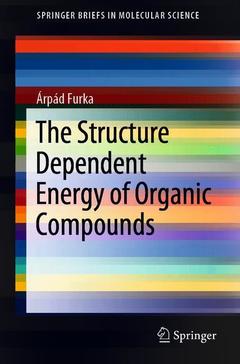Description
The Structure Dependent Energy of Organic Compounds, 1st ed. 2019
SpringerBriefs in Molecular Science Series
Author: Furka Árpád
Language: English
Subjects for The Structure Dependent Energy of Organic Compounds:
Keywords
structure dependent energy; thermochemical reference system; relative enthalpies; heats of reactions; enthalpy of reaction; driving force of reactions; energy of compounds; thermochemistry; organic compounds; structure dependent energies of radicals; structure dependent energies of carbocations; structure dependent energies of carbanions; experimental heats of formation
124 p. · 15.5x23.5 cm · Paperback
Description
/li>Contents
/li>Biography
/li>Comment
/li>
Describes an alternative thermochemical reference system that makes it possible to calculate the structure dependent energies for organic compounds, radicals, cations and anions
Includes calculated structure dependent energies for most types of organic compounds
Helps to interpret the components of the heats of organic reactions as the contributions of disappearing and newly formed structures
These books may interest you

Alkynes in Cycloadditions 167.00 €

Oxidation in organic synthesis 100.20 €


